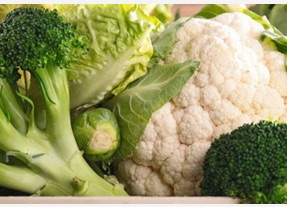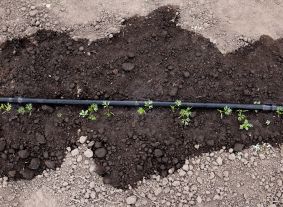2017: Year of the Brassica
Views: 5637

It’s the year of the Brassica. The National Garden Bureau (NGB) gave 2017 the honor of representing what people commonly call cole crops. We’re talking common kitchen items such as broccoli and cabbage, and also some of the more uncommon and “hey, I didn’t know that was a Brassica!” crops such as kohlrabi and radishes.
Some folks just won’t eat their cole crops. And to them I say, “All the more for those who do!” I’d suggest if you’re one of those folks, consider giving that broccoli or kale or cabbage dish another try. Why? Well, if you find cole crops on the bitter-tasting side, some forms of glucosinolate causes that bitterness. While glucosinolates are compounds that can help lower the risk of digestive-tract cancers, they are also the source of that bitterness. The NGB says plant breeders have been working their magic to replace those bitter glucosinates with ones that have a more neutral flavor. And if you are lucky enough to enjoy red-tinged versions of cabbage, cauliflower, broccoli, kohlrabi and all the rest, then know you’re getting an extra dose of the anti-oxidant called anthocyanin. Cole crops have lots of good-for-you compounds.
During this Year of the Brassica, how can we enjoy cole crops all year long?
Spring: Cole crops are some of the first items that can be planted in the garden. They can handle a light frost in the spring without a problem. For the first cole crop harvest, plant a row of radishes each week for about a month. Thin the rows as the sprouts emerge—those small radish tops are good eats! The ones you leave will grow into full-sized radishes. You can also plant early crops of broccoli, harvested when small.
Summer: You can plant cabbage in spring and harvest it from summer through fall, and beyond if you have a mild winter. The great thing about cabbage is it can be harvested as soon as it forms a head. A late-summer planting of cabbage will give you crops late into the year. Kale is another crop that keeps giving from summer through fall.
Fall: Like I mentioned above, a later-summer planting of the leafy or headed cole crops will keep you in cabbage (and kale and cauliflower, etc.) until winter sets in. And because cole crops can handle that touch of frost, you could keep harvesting until the snows comes. In fact, some say (as do I!) that the touch of cold actually helps develop the crops’ flavors.
Microgreens: Grow baby versions of broccoli, radish and kale—or really, the just-sprouted versions—on your countertop 365 days a year. They add a spicy touch to salads, sandwiches and whatever else you can imagine.
There are plenty more Brassicas you can grow, of course—Brussels sprouts, romanesco, “brocaflower,” broccoli rab, etc. Pick one! Or two or three. Grow from seed to harvest the thinnings or find young transplants in your garden center. Not sure what to do with it once harvested? The NGB has a video on the possibilities at http://ngb.org/year-of-the-brassica/.
Thanks to the National Garden Bureau for the photo!
Meet Ellen Wells
When you’re raised on a farm, you can’t help but know a thing or two about gardening. Ellen Wells is our expert on edible gardening.…
Ellen's Recent Posts

Asparagus






